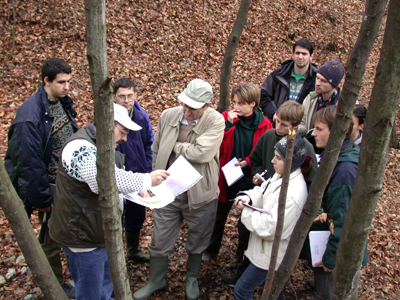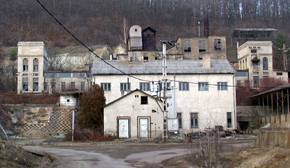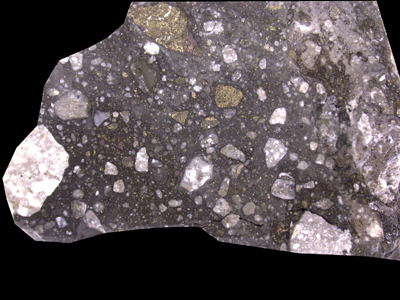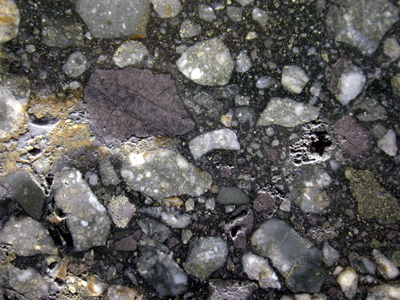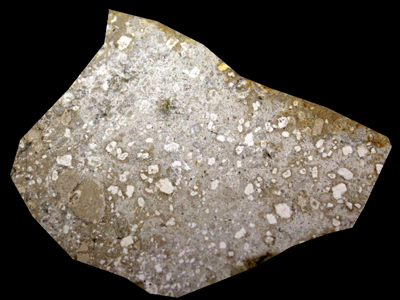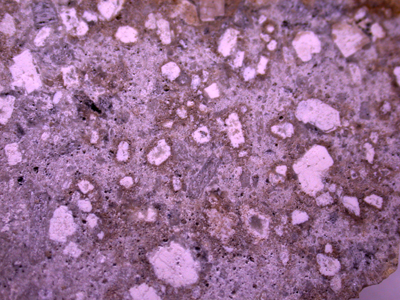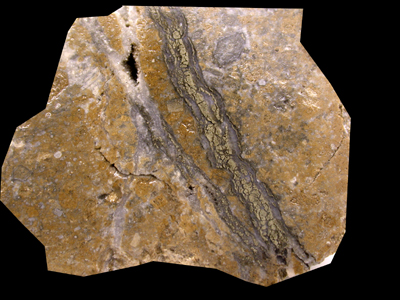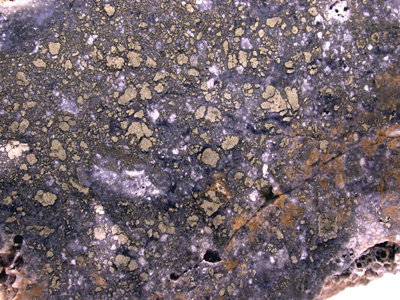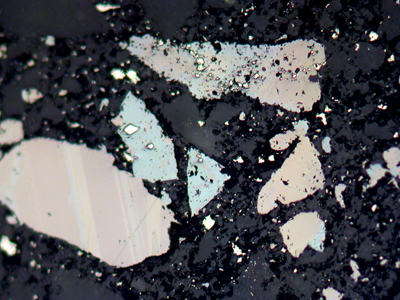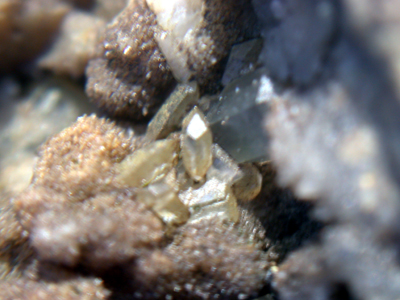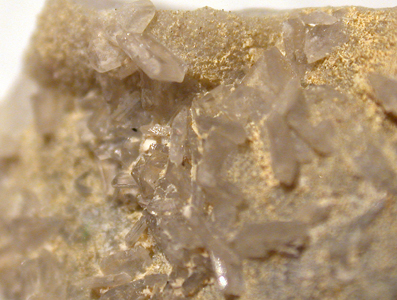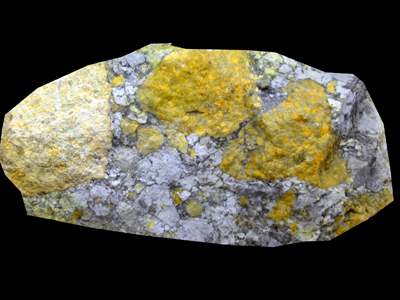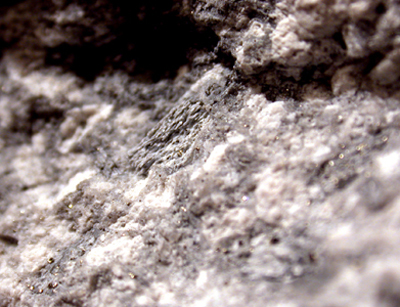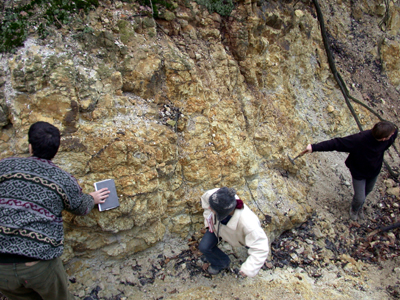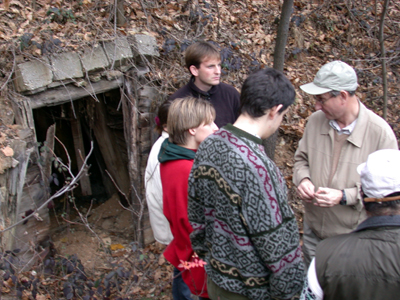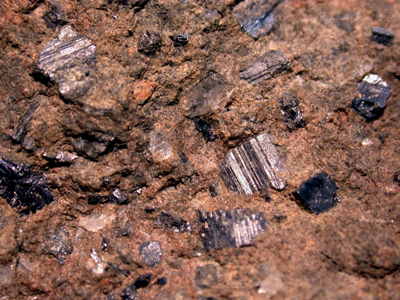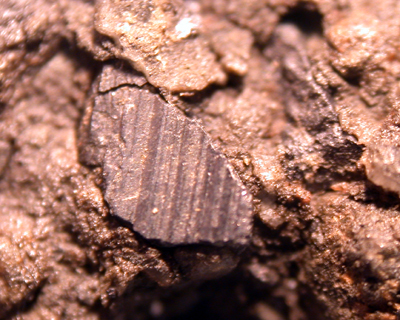| Bükk-Szarvaskõ field trip- november, 2003 |
|
||
|
|
Field
trip 1-day 28. 11. 2003 Introduction
On
the first day of our field trip we visited the Palaeogene volcanic sequencies
and associated hydrothermal mineralizations at the Recsk area and in
the Ilona-valley. Dr Molnár Ferenc and Mr. Nigel Maund, the best
specialist of the area guided us on this day. The
Mátra Mts.
The Mátra Mts is lacated nearly in the middle
of the Inner Carpathian Volcanic Belt. The Mountains is made up of two
volcanogenetic units - the older (Palaeogene) unit is a result of the
late Eocene volcanic activity. The younger (Neogene) unit, that forms
the bulk of the mountain was a product of the Miocene volcanic activity
during the time of of the closing of the Tethys. Both of the volcanic
sequencies are includes well developed hydrothermal alteration and mineralization.
The aim of our field trip was to look at the palaeogene volcanic sequencies
and associated HS and LS type mineralizations.
Mining history at the Recsk area Mining activity goes back presumably as far as the prehistoric age,
but little is known about the mining, until the 18th century, when prospecting
revieved after the Turkish wars. Copper ores and stockwork-like bodies
of Ag-containing galena and fahlore were exploited, whereas the alunitised
and pyritised wallrock was used for for producing alum. These rocks
are still exploited and leached for the production of mineral water
used in balneological treatments. The fluctuating mining activity resumed
again, when the enargite-luzonite-fahlore Au-pyrite massive stockworck
mineralization of the Lahóca Hill was discovered in the middle
of the 19th century. Continous exploitation of the ores of the Lahóca
Hill was started by the Hungarian treasury in the 1920s and finished
in the 1970s. The large-scale ore prospecting in the 1960's discovered
a full Cu-porphyry system below the already known Lahóca-type
mineralization.
Palaeaogene volcanism and its megatectonic background The Recsk volcanic sequence is similar to the other Palaeogene volcanic
sequencies (East-Velence Mts., Zala Basin) are related to the subduction
of the Neo-Thetys ocean and the collision of the European crust with
Apulia microcontinent. The subduction and the collision generated a
geochemical high-medium K containing neutral-acid magmatism along the
Periadriatic lineament. During the Palaeogene and Neogene some parts
of the magmatic bodies moved to E-NE on the Alcapa Unit. The other part
of the magmatics remained in the Alpean collision zone, where they eroded
becuse of the intensive compression and rising. The volcanics on the
escaped ALCAPA Unit did not erode, and that is why we can see now their
volcanic and subvolcanic parts with the associated mineralizations.
The Palaeogene unit extends over about 25 km2 on the
North-eastern part of the mountain in the vincinity of Recsk, along
the Darnó Line, on the Pelso Megaunit. The magmatic complex is
a stratovolcanic sequence, a complicate caldera structure with four
eruption cycles. The rocks are of neutral (andesitic, dacitic) type
and were formed in subvolcanic, submarine and subareal environment.
The volcanic activity can be dated by the fossils (Nummulites sp., Lithothamnium
sp.) of the marine sediments interbedded in the upper part of the sequence.The
fossil founds fix the age as Upper Eocene. The complex copper porphyry
system was formed during the third stage of the volcanic activity. The
dominant structural feature of the Palaeogene Unit is a NE-SW trending
strike-slip displacement zone known as the Darnó megatectonic
zone. This zone is an extension of the Zagreb-Zemplén Line which
separates regional-scale structural units trough Hungary. The existence
of this major tectonic lineament post-dates Palaeogene volcanic activity.
As such it may represent a transfer structure associated with transpressional
tectonics. The lineament also appears to control the position and direction
of the major ore bearing zones both in the shalow epithermal and deep
-seated Su-porphyry systems.
The deep-seated ore zone is related to a subvolcanic diorite intrusion emplaced during the second stage of the colcanic activity. Typical porphyry (Cu-Mo) mineralization developed in the intrusion and skarn (Cu-Zn-Fe) mineralization formed along the exo-/endocontact. The carbonate host rocks contain replacement Zn-Cu-Fe ore. The major
epithermal shallow ore of the Recsk Ore Complex crop out in two areas.
High sulphidation type ore in the Lahóca Hill area and the epithermal
zones in the Parádfürdõ area show features of a low-sulphidation
type overprint. The main period of epithermal mineralization is younger
than the third Upper Eocene volcanic high-sulphidation type mineralization
on the Lahóca Hill.
The Cu-porphyry mineralization The Cu-bearing diorite porphyry intrusion has an irregular, elongated oval shape with total length of about 3000 m and awith attaining 800 m in plan. The central core of the intrusion underwent only weak silicification. This is sorrounded by a phyllic zone consistig of quartz, sericite and anhidrite. The average thickness of this zone at least 100-200 near the cupola, whereas it is thinner on the lateral margins. The sorrunding propylitic zone shows discontinuities and often overlaps with the endoskarn along the contact of the intrusion and carbonate rocks. The typical alteration minerals in the propilityc zone are albite chlorite, epidote, anhydrite and calcite. The deeper part of the propylitic zone grades to an endoskarn characterised by a diopside, amphibole, epidot, and phlogopite bearing assemblage. In the exoskarn zone garnet-diopside and actinolite-epidote assemblages formed during the alteration of the carbonates. Wolastonite is the predominant alteration mineral in the chert units of the Mesosoic sequence. The exoskarn is fringed by a 2000-2500 m wide metasomatic zone where carbonate rocks are recrystallized to marble. The skarn is overprinted by subsequent hydrothermal processes that resulted in the occurence of a serpentinite-anhydrite-magnetite assemblage. The Cu(-Mo)-porphyry mineralization of the diorite intrusion occurs as chalcopyrite disseminations and quartz-chalcopyrite stockworck. Underground exploration revealed that the ore contoured by a 0,4% Cu cutoff grade, forms 80-100 m wide sheet -like bodies with vertical extent of about 300-400 m and adip of 60-70° subparalell to the contours of the central zone of the intrusion. From the low-grade central-zone (0,2-0,4% Cu) a gradual enrichment to 0,4-0,6% Cu occurs in the phyllic alteration zones, and the richest porphyry ore of Cu>0,8% is located in the propylitic zone. Molybdenite is almost exclusively redtricted to the phyllic alteration zone, with 0,01% Mo average grade. Outward from the propylitic zone the endoskarn forms relatively narrow (10-50 m wide) and dipping (>60°) ore bodies that are continous for about 100 m in vertical and horizontal directions. Within this zone the ore forms irregular replacements and massive lenses of chalcopyrite. The average grade of the endoskarn is 1,5% Cu. With increase in sphalerite content, the endoskarn ore gradually changes through the exoskarn metasomatic replacement ore. The replacement Zn-Pb (Fe-Cu) ore occurs along the bedding planes of Mesosoic carbonate rocks. Subordinate bodies of this type also occur in veins and breccia zones. Fluid inclusion
studies revealed assemblages of halite bearing and vapor-rich inclusions
in the chalcopyrite -quartz stockworck, indicating boiling of fluids
during the formation of the Cu-porphyry. Most typical homogenization
temperatures are between 250 and 400 °C salinities range from 25
to 55 as well as from 0 to 10 NaCl eq wt%. Variation in the mode of
homogenization of the halite-bearing inclusions and variation in the
range of calculated pressures from 50-80 about 300 bars that the during
formation of the Cu-porphyry the pressures varied between lithostatic
and hydrostatic.
The Lahóca Hill The mineralization
at Lahóca Hill is confined to breccia zones. The irregular flat
breccia bodies are covered or surrounded by advanced argillic alteration
(pyrphyllite, dickite, kaolinite, quartz) which changes distally to
smectite-illite alteration. The average thickness of the ore bearing
breccia zones is about 30-50 m. Their length is usually 200 m with a
50-100 m width. The breccias are often re-brecciated and re-cemented
by chalcedony, and clay minerals. These breccias have a polymict character
and contain fragments of earlier volcanic hydrothermal phases. The clasts
are usually slightly rounded and their size rarely exceeds 10 cm.
Less
frequently Au occurs with enargite and luzonite as native gold or electrum
inclusions in enargite ore. In small, satellite ore bodies that are
embedded pipe breccias, barite and chalcopyrite are abundant. The average
Au grade is 3 g/t in the breccia ores. Gold is concentrated in the strongly
silicifized zones with high sulphide content. The highest Au content
occurs along the upper argillic contact of the breccia unit with overlying
andesites. In this zone average grades of 100-180 g/t Au in pyrite -rich
pods were reported . The Au content of ore correlates with the Cu content,
but there is no correlation between Au/Ag content. The Ag content is
generally around 1 to 5 g/t, although it may be as high as 1000 g/t
in some places. The Cu content of ore varies between 0,1 and 0,7%. The
content of the kaolinite and smectite-bearing alteration zone is usually
only 0,1-0,2 g/t. Ilona-valley The
Ilona-valley is a 4.5 km long valley, lays south of Parádfürdõ
in Heves county. This straight trough is determinated by a tectonic
fracture. The mountains surrounding it from N to S are: the Vörösvár,
the Hegyes-hegy, the Macska-hegy, the Veresagyagbérc, the Hosszú-bérc
and the Pál-hegy. Among these the Vörösvár,
the Hegyes-hegy and the Veresagyagbérc are parts of the Recsk
Andesite Formation. The extension of this formation is much wider under
the surrounding oligocene beds: in the west up to Parád, in the
north to Mátraderecske, in the east to the area of the Vadalmás.
The southern extension is not known. The formation is produced by a
5 cycles of stratovolcanic activity, it comprises lava, pyroclastite,
subvolcanic, intrusive and metasomatic (skarn type) rock bodies of different
facies (submarine, terrestrial). The volcanics have total thickness
of 400 to 600 m, whereas the intrusion has a thickness of over 800 m.
[ZELENKA, T.-FÖLDESSY, J. 1997]It is underlain by triassic sediments,
and overlain by the oligocene Kiscell Clay Fm. and Pétrevására
Sandstone Fm. The type section of one member of Pétervására
Sandstone is here in the southern part of the valley next to the waterfall. Stop-1. Strongly
silicified bodies refer to the HS type process. These silicified bodies
occur as flat lenses and vein-like vertical-subvertical bodies with
dimensions of 10 m. The elongation of the largest vein-like body is
about 200 m. Some bodies show a vuggy slica texture. These bodies are
surrounded by a quartz stockwork in which the thickness of the veins
varies from a few centimetres up to 10-20 cm.Around the silicified bodies
the country rocks are altered to kaolinite and illite. Alunite and pyrophyllite
are also present in places. The ore minerals in the argillic alteration
zones are galena and sphalerite with lesser amounts of Pb-Se and Ag-Sb
sulfosalts. The later tetrahedrite and pirit are more typical in the
silicified bodies and the late vein fillings. Rare Au-Ag-Bi-Te and Sb
minerals are associated with younger pyrite-rich zones.
Stop-2. On
this trip we had the opportunity to examine the breccia body which appears
right next to the former open cast mine of alum (the substance of this
was used by the hydrotherapic bath of Parádfürdõ).
The second stop was the Vaskapu ereszke, which was an ore exploration
gallery in the 1800-ies. Baron Orczy J. started here firstly a serious
copper and silver exploration in 1780. Around the gallery there is also
an argillic alteration, but inside we found an other breccia which is
not similar to the first one. This breccia is not properly examinated
yet, but according to our foreign college it could claim a great interest
geologically and economically as well.
Stop-3. On
our field trip we visted the High Sulpidation-type epithermal zones
at the Lahóca Hill. The outcrop is sizuated on the northern side
of the Lahóca Hill exposes a polimikt breccia pipe. The brecciation
occured in more phases. The clasts of the breccia came from the older
volcanic sequencies. During the intensive hydrothermal activity the
breccia was illitized kaolinitized and silicifized. The SiO2 occurs
as vuggy silica, but it does not form a big homogenous body. The pH
of the fluids, which altered the rock, was not 1-2 but 2-3 which is
not typical in HS-type hydrothermal systems. One of the possible reasons
of it, the hydrothermal system developed under submarine conditions.
There is an intensive silicification along the stockworsks also. The
stockworcks contain quartz and pyrite. The average Au content of the
rocks in this outcrop is 3 g/t.
Stop-4. The
fourth outcrop was located at the entry of the old shaft at the south
part of the Lahóca Hill. Not far away from the entry we can see
the old buildings of the miners and the ore-treatment buildings. The
rocks are here polimict breccia too, with magmatic clasts. The breccia
is slightly silicifized and contains contains the ore. The typical minerals
in this outcrop are enargite and luzonite.
|
||
